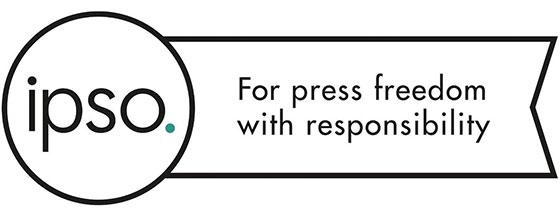
Press regulation has been a thorny issue for the UK, but out
of the attempts by Westminster to bring Fleet Street to heel, there might be a solution to a major online advertising problem.
Quality newspapers and magazines have long been looking for a way to
separate themselves from fake news suppliers and angry bloggers in bedsits. Today, they might just have unveiled about the nearest thing the UK has to be a kitemark of quality journalism. The Independent
Press Standards Organisation (Ipso) quality mark can be put on articles by members to show that it meets the organisation's standard of being produced by trained journalists working for a reputable
source.
Ipso, let us not forget, is the rival body to Impress. The latter is backed by Royal Charter, whereas Ipso is not. In fact, Ipso has most of the major newspapers as members because of
the principle that it is not backed by Royal Charter because ultimately, in principle at least, that could mean being licensed by Westminster. You can argue this point over and over again but, trust
me, that's essentially what it boils down to -- self-regulation under Ipso or the perception of being regulated by the people you're in business to hold to account.
advertisement
advertisement
This new logo is a good
tactical move for a couple of reasons. Firstly, it gives members something tangible to display. Let's not forget that the Government's potential position is that papers not joining up with a regulator
recognised by Royal Charter could be in a position where they pay legal fees for both sides in libel cases, regardless of the outcome of a trial. It is a highly contentious issue, and the government
has not yet pulled the trigger on the threat. Ipso at least has something tangible now for members to display to ease the risk of a government one day forcing the issues and making them pay both
sides' fees.
So the public face of this new logo is clear. It's all about getting people to understand that they are reading content from a quality publication rather than the bedsit of an
activist or the propaganda unit of a third-party government looking to disrupt internal affairs.
This is also kind of looking like a kitemark that could be used to pick out quality
publications for advertisers. The industry clearly needs a way to prioritise decent journalism above the "noise" that's out there, and surely this logo needs to be a digital watermark of quality that
reassures readers -- but more importantly for adland, tells ad-buying and -selling platforms that the content should be treated more favourably because it is more trustworthy.
If you
think about it, the ads.txt movement has the potential for brands to be a lot safer by ensuring that only the people it entrusts can place its messages around the internet in places where it will not
end up being embarrassed.
Anyone else thinking we have a match made in heaven? A piece of code that tells networks who can and cannot sell its inventory and a piece of code that says "I am a
quality piece of journalism?" Get the two talking and advertisers can place messages in a brand-safe environment next to decent content.
So, today's announcement of a logo will be written
about for its public sign that the content you are viewing is a fake news-free environment. I can't be the only one wondering if it's also a kite mark for brands to find quality, trusted, safe content
to advertise against.